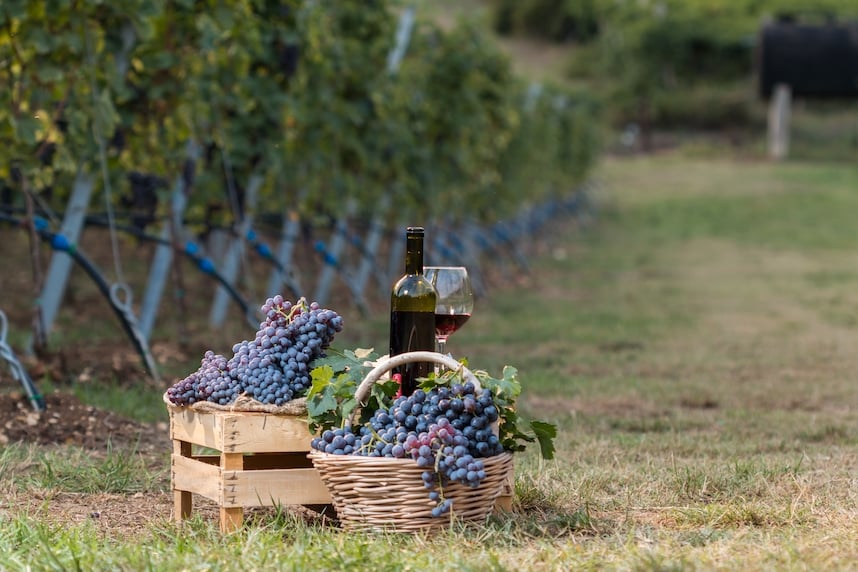Amarone della Valpolicella is a well-known wine that is much appreciated abroad. Among the most exported Italian wines, the Amarone is a source of pride for Veneto, a region that holds the record in Italy for the quantity and quality of wines produced here.
Among myths and legends: the history of Amarone della Valpolicella DOCG
The origins of Amarone della Valpolicella DOCG are not certain, they have an aura of mystery. The wine’s production specification explains that Amarone della Valpolicella boasts an ancient history that began in the fourth century AD. At this time, Cassiodorus King of the Visigoths addressed a letter to the landowners of Valpolicella asking for bottles of Acinatico, Amarone’s predecessor, for the royal wine cellar. The importance attributed to the Amarone wine was subsequently confirmed by the Edict of Rotari, which established tough penalties for anyone who damaged the vines and bunches of grapes intended for its production: Amarone was considered as currency to pay for feudal rights.
Amarone has maintained its popularity ever since, all the way down the centuries: indeed, during the Enlightenment, Scipione Maffei referenced the bitter wine of Valpolicella as being endowed with great grace.
Popular legends, on the other hand, link the history of Amarone della Valpolicella to another famous wine of the area: Recioto. A red wine passito wine, the Recioto is sweeter than the Amarone because fermentation is stopped before all the sugars are converted into alcohol during the winemaking process. Stories tell of how Amarone is an "escaped Recioto" that was born through forgetfulness at the Cantina Sociale Valpolicella, where a barrel of Recioto was left to ferment longer than it should, converting all the sugars present in the must into alcohol. Adelino Lucchese, director of the Cantina Sociale Valpolicella, exclaimed in 1936 after tasting the wine: "But this is not Amaro, it is Amarone!" And thus began the history of Amarone as we know it today. The first bottles marketed under this name date back to 1953. However, this great red wine had to wait until 1968 for DOC certification, and until as recently as 2010 for DOCG certification.
Amarone della Valpolicella DOCG: characteristics and types
Amarone has a great body and structure, but which are the vines responsible for such successful vinification? They are native Venetian black grape vine varieties, namely the Corvina, the Corvinone and the Rondinella. Corvina grapes must be present in the Amarone at a variable percentage that covers 45-95% of the total. The Corvinone vine can replace the Corvina for a maximum of 50%. The use of Rondinella is allowed at a percentage ranging from 5% to 30%, but other non-aromatic black grape varieties grown in Verona can also contribute.
The Amarone della Valpolicella DOCG production area extends from the province of Verona, following Lake Garda to the border of the province of Vicenza, along valleys and slopes that enter a plain shaped like a hand. The soil here has a number of important characteristics deriving from its volcanic origins and calcareous-dolomitic disintegration: together with the unique microclimate of the area, the soil makes this one of Italy’s best-suited areas for the cultivation of the vine.
Amarone della Valpolicella DOCG wines are given different names depending on the production area: "Classico", referring to the oldest area of production, or Amarone della Valpantena DOCG if the wine is made on the hills further east of the area of choice. The grapes are harvested strictly by hand and the bunches are dried for 120 days on wooden racks. Finally, the must obtained is subjected to aging for two years, or four years for the Amarone della Valpolicella DOCG Riserva type.
Food pairings
Amarone della Valpolicella DOCG is an elegant and sumptuous wine, with great aging potential. It is a dark garnet red colour, and has fruity, balsamic and spicy aromas. With a soft taste and persuasive and harmonious tannins, Amarone della Valpolicella should be paired with rich dishes such as meat menus, roasts and, above all, game. Taste it as an accompaniment to risotto or braised Amaroneor with aged cheeses!
Now that you know everything about Amarone della Valpolicella DOCG, serve it in a large glass at 18-20º C. Appreciate it with food, at the end of a meal or, in the case of the excellent Amarone della Valpolicella Classico DOCG 2018, as a meditation wine on its own!
 Free Delivery from 69£
Free Delivery from 69£
